To determine the size of the anode rod you need, you will need to know the size of your water heater tank.
The size of the anode rod will typically be the same as the size of the water heater tank. For example, if your water heater has a 40-gallon tank, you will need a 40-gallon anode rod.
Anode rods come in different sizes to fit different-sized water heater tanks. The size of the anode rod will typically be the same as the size of the water heater tank.
Choosing the correct size anode rod for your water heater is essential to ensure that it functions properly and provides effective corrosion protection for your tank.
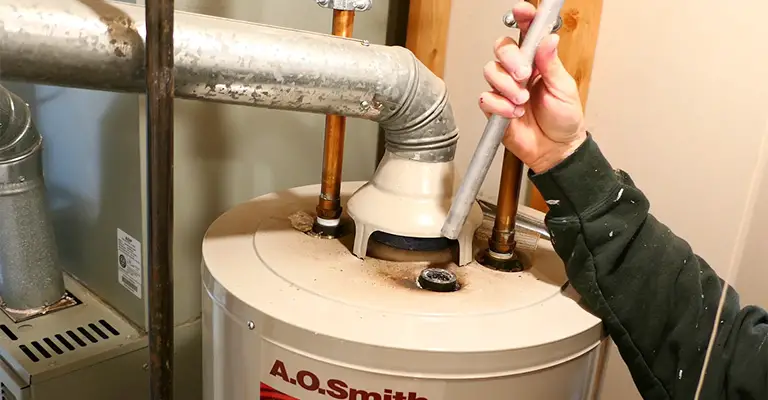
What Size & Type of Anode do I Need For My Hot Water Tank?
As the name implies, the anode rod only serves one purpose: to extend the tank’s life. One of the only parts of the water heater that cannot be replaced in the tank. It is necessary to replace the entire unit if the tank fails.
It is important to note that the anode is a “sacrificial” part, which means the electrochemical activity that destroys your tank will instead attack the anode rod. There is no guarantee that anode rods will last forever.
As a result, they corrode, and when the anode material dissolves completely, the tank is no longer protected.
It is generally recommended to run the anode from tip to toe along the full height or length of the tank. With a hacksaw, you can cut the anode to length if it is too long.
Length Is More Important for Sacrificial Rods
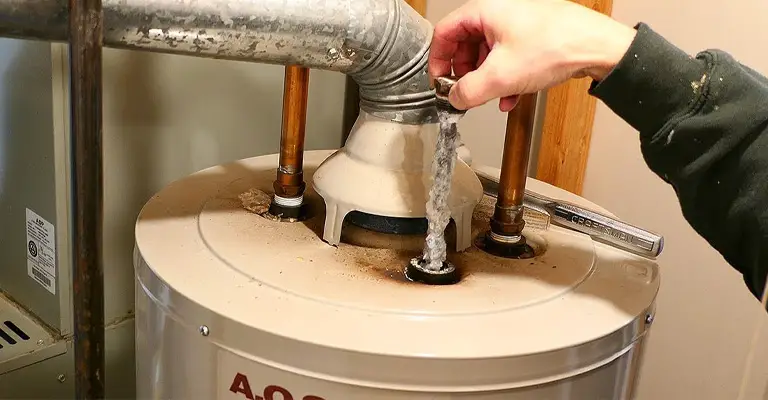
Anode rods can be classified into two categories: sacrificial anode rods and non-sacrificial powered anode rods.
For a water heater’s inner lining to remain intact, sacrificing anode rods rely on their material to degrade. As opposed to powered anode rods, powered anode rods do not degrade over time.
Electric pulses are used to remove the corrosive minerals from the interior of the water tank using powered anode rods, which do not degrade. Anode rods of this type is non-sacrificial, meaning they do not need to be replaced.
In addition, since electrical pulses are used, the length of the anode is not as crucial to its performance. Magnesium, aluminum, and zinc are commonly used in sacrificial anode rods.
There is a great deal of importance to the length of these rods because the more metal is present in the water, the more metal will be available to react with the corrosive elements in water instead of the water heater.
Anodes Delay The Inevitable
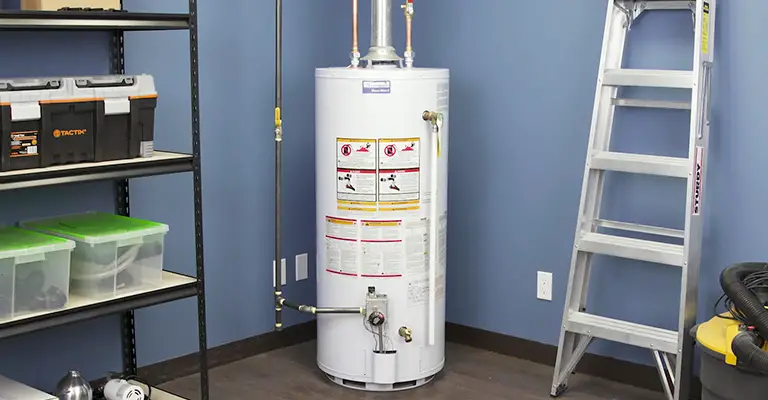
In contact with water, steel, and other metals corrode since minerals in water eat away at metal. Rusting and leaks will occur over time in any metal water tank. Steel water heaters are therefore coated with vitrified porcelain inside to prevent corrosion.
Despite its glass-like appearance, this layer will not fully protect the steel water tank from corrosion. Your hot water tank’s anode rod is a secondary method of protecting the steel.
Due to the lower noble metals used in anode rods compared to steel, the minerals and other materials in water attack them first, rather than the steel, which is why anodes are referred to as sacrificial.
Water tanks are protected from corrosion and leaks so long as the anode rod isn’t fully spent.
Locating the Anode
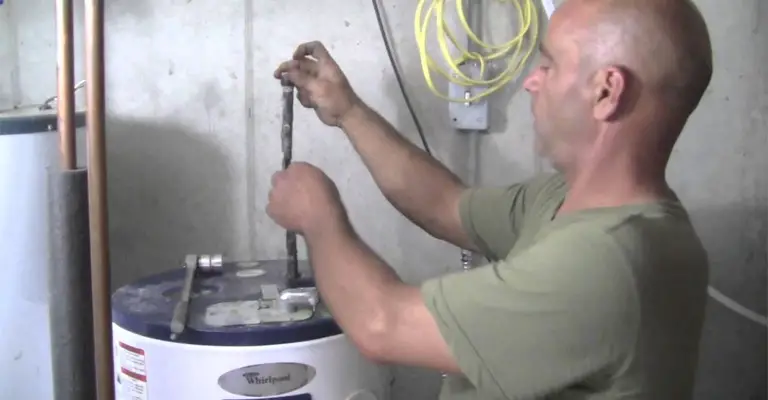
Many anodes have large, visible hex heads that thread into the top of the tank, while others are hidden under knockout plugs. On the hot water outlet of a heater, a manufacturer can provide an anode that extends from the steel pipe nipple.
It would be impossible to find this if you were unaware of its existence. Having an 18″ pipe wrench and strong biceps is all you need to remove and inspect them.
Components of an Anode Rod
Nowadays, zinc, aluminum, or a combination of both are the most common materials used for anode rods. A material like this is most effective at protecting the heater and is less likely to cause odors in hot water.
There is a ¾ NPT hole on the end of all anode rods. You may only be able to find replacement rods in one length, but if it’s too long, you can cut it down. There will be no harm done to it.
Whether you are working on a newer water heater or one that is 20 years old, the procedure is the same.
In recent years, manufacturers have found ways to make water heaters in less time and with less material, but their basic construction still remains the same. Extending the life of any tank begins with maintaining the anode rod.
Hex-Type Anode
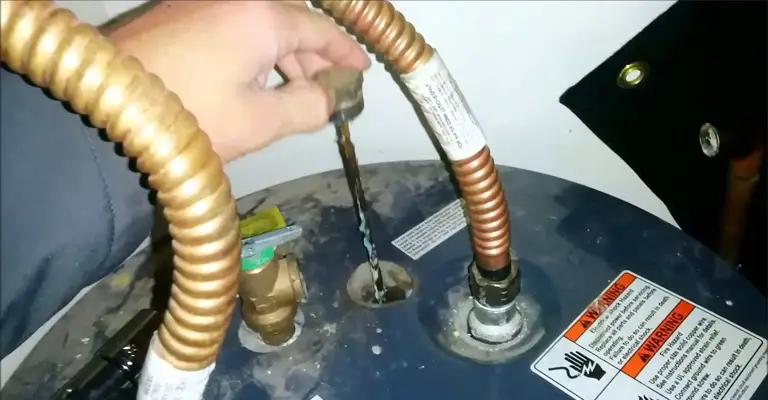
It is often more difficult to remove the hex-shaped anode for inspection due to its difficulty finding. I recommend using a ½” drive, an 11/16″ socket, and a breaker bar.
Getting it free from the tank threads will require some might once you get it in your hands. It is important to observe whether the rod is intact after removing it.
If the water is of poor quality, it may have a clear, slimy residue that can be easily rinsed off. Replacing it is a good idea if you see its best days behind it.
Are Water Heater Anode Rods Universal?
It is common for water heater anode rods to be universal. Only the following exceptions apply:
Bradford White: The anode is sometimes built into the hot water outlet on some models.
Buderus: The magnesium anode is installed using a different type of threading.
It is common practice for all other water heater brands to use a magnesium anode with a 3/4-inch NPT thread.
Rod That Is Too Long Can Damage the Tank’s Lining
An anode rod with a longer lifespan is generally better than a shorter one. It is, however, important not to use an anode rod that is too long in your water heater. There should be no contact between the anode rod and the tank’s bottom.
The bottom of your water heater tank will most likely be touched by an anode rod that is too long. In addition to wearing out the inner layer of the tank, this reduces the anode rod’s lifespan.
If you purchase a long anode rod, it’s best to leave about 2 inches between the bottom of the tank and the bottom of the rod. Don’t worry if you purchase a rod that doesn’t fit; you can cut it if it doesn’t fit.
Short Anodes Won’t Last as Long
Because sacrificial anode rods degrade to protect the water heater’s inner lining, a shorter rod will not last as long. There will be more material to degrade the longer the anode rod, so it will last longer.
You should also get a longer anode rod so that you won’t have to check and replace them as often. Three to five years is a typical interval between anode rod replacements in a water heater that’s functioning properly.
Additionally, there are a few other factors that affect the lifespan of an anode rod. Your area’s water type, for example. Hard water accelerates the degradation of anode rods, especially magnesium anodes.
Final Words
An anode rod maintains the reliability of your tank-style water heater. An anode rod protrudes into the water below and screws into the top of the tank. Depending on the size of your appliance, an anode rod can measure up to 40 inches long.
Replacement of sacrificial anode rods should be performed regularly. It’s possible to have a leaking water heater and stinky water if you don’t have your plumbing service replace the sacrificial anode when it’s spent.
Anode rods for water heaters, including sacrificial and non-sacrificial rods, are the expertise of your plumbing professionals.
Whenever you sense a strange odor or a gel-like substance coming from your water heater, it’s time to inspect the anode or anodes.






